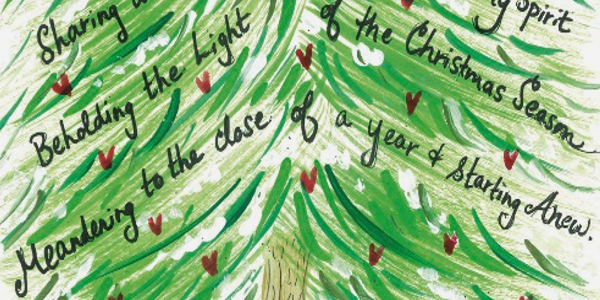When you purchase a gift for someone, your ultimate goal is to bring them happiness, right? What joy it is to see that smile on their face when they open the package!
Did you know that when it comes to buying happiness, research now shows what tops the list?
It turns out that ‘new and diverse experiences’ are the best joy-givers.
Dr. Thomas Gilovich, professor at Cornell University says, “we buy things to make us happy and we succeed – but only for a while. New things are exciting at first, but then we adapt to them.”
Better than buying a new shirt, electronic device or car, is spending your money on trips, concerts, art galleries, a hiking trail pass, or an educational course.
It seems more and more people are becoming aware of this. Even at my daughter’s young public school age, friends are gifting movie outings or trips to the museum instead of the regular boxed or packaged items.
Clearly this is something worth investigating. A study was created to measure people’s self reporting happiness levels with material purchases vs. experiential purchases.
Initially their happiness with the purchases was ranked even. However, over time, people’s satisfaction with the things they bought went down, whereas their satisfaction with experiences they spent money on went up.
Seems counter-intuitive that a physical object that you can keep for a long time doesn’t keep you as happy as long as a one and done experience does, right?
Ironically, the fact that a material thing is always present makes it easier to adapt to, so it fades into the background and becomes part of the new normal. Where happiness from material purchases diminishes overtime, experiences become ingrained part of our identity.
“Our experiences are a bigger part of ourselves, more so than our material goods”, says Gilovich. You can really like your material stuff, you can even think that part of your identity is connected to those things, but they still remain separate from you. In contrast, your experiences really are part of you. We are the sum total of our experiences.
From a neuroscience perspective this is bang on! Our inner ‘Brain Map’ containing its many pathways, patterns and systems is designed and strengthened according to our behaviours, life experiences and the environments we spend our time. The more we actually do something, the stronger, more detailed and swift those neuropathways become.
Experiences engage and create us – they make us who we are and can support who we are becoming as we apply this wisdom strategically in our lives.
According to Lara Boyd PhD, a scientist, research and Director of the Brain Behaviour Laboratory at University of British Columbia, it has been proven that every time we learn a new fact or skill we change our brain.
These changes occur on the 3 main levels: chemical, structural and functional.
On the chemical level, change and growth happens when we have a brief encounter with a new piece of information or activity, it is associated with short term memory. With practise and repetition it then begins to shape the structure of our brain which is associated with long term memory pathways. Then with further use and development, it begins to affect our overall brain functioning.
Just reading this article, you are growing your brain! This is the power of neuroplasticity at work.
My grandmother lived to her mid 90’s. Like many other seniors, she had a whole lot of common sense and her priorities straight. Over the years, she practiced down scaling and following a more minimalist lifestyle. Not only did she want to be free of ‘stuff’ that would distract her mind and clutter her environment, she also wanted to free up her time and engage in more activities and travel.
In fact, I clearly remember her telling me once, ‘If I were to live my life over, I wouldn’t purchase a big home or many furnishings. Instead I would live in a small apartment and come and go as I please.”
I think this speaks volumes to her sense of adventure and open mind, and also it also validates what I have noticed about people at a later age and stage of life; they know what’s important and they know what is good for them. Most of all, they are concerned about their cognitive health.
With diseases on the rise, especially cognitive issues like Alzheimer’s, Dementia and Stroke, it’s in everyone best interest to learn about their brain and develop a healthy aging brain plan.
My grandmother knew of the value of Essential Nutrition and Brain Fitness, as she practiced these strategies in her own way. Her cognition was intact right until her final days on the planet. That is a testimony to how well it works.
When considering what may be a useful and joy creating gift for your friends and loved ones, consider the value of experiences and ones that contribute to their current and long term wellness and mental health.
Warmly,
Jill

